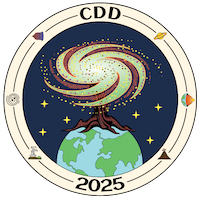Orateur
Description
Oceanic Transform Faults (OTFs) are active, strike-slip plate margins, which offset the mid oceanic ridges and form the Ridge Transform Intersections (RTI) on either ends. Beyond the active part, OTF’s fossil record is preserved as Oceanic Fracture Zone (OFZ), which eventually subducts at the convergent margins and often exhibits higher hydration/alteration and distinct mechanical properties from the surrounding oceanic lithosphere (e.g., clustered seismicity at shallow and deep levels, higher production of earthquakes and weaker seismic coupling at the OFZ-subduction interface). Such different OFZ-architecture is observed through δ11B enrichment in arc lavas produced above the subducted OFZ. However, processes responsible for such geochemical and geophysical characteristics of OFZ, and their long-term effect in subduction dynamics remain enigmatic. These processes are thought to be operational at the active part of the OFZs, e.g., at OTFs, where low seismic velocity anomaly and high Vp/Vs ratios are observed. Recent petrological studies of ultramafic rocks from transform faults suggest deep deformation-driven fluid percolation, which acts as effective weakening mechanism and is responsible for intense lithospheric hydration. However, the deformation and fluid-rock interactions affecting the magmatic crust at the transform faults remain elusive.
In this study, we investigate amphibolites and foliated-metagabbros collected from the east-RTI and Southern Transverse Ridge (STR) of the Vema Transform Fault at Mid-Atlantic Ridge. Micro-structural and geochemical analyses show four possible deformation regimes affecting the magmatic crust: (1) A high-temperature magmatic regime (~900–950 °C), marked by plastic deformation and melt-rock interactions, resulting in formation of brown amphibole, ilmenite-magnetite-apatite, and associated secondary plagioclase & clinopyroxene. (2) A high-temperature hydrothermal regime (~750 °C) associated with semi-brittle deformation and fluid-rock interactions at amphibolite facies, evidenced by presence of syn-deformational green-amphibole, secondary plagioclase, sphene-ilmenite and chloro-apatite. (3) Subsequent medium-temperature (~500 °C) phase with dominantly brittle deformation and fluid-rock interactions at greenschist facies, linked to hydrothermal fluid infiltration, producing green-amphibole, chlorite, and sphene; finally, (4) A low-temperature (~200 °C) brecciation phase with zeolites forming in the breccia-matrix. These distinct deformations and fluid-rock interactions show variable hydration/alteration, leading to chemical and rheological modifications of the magmatic crust at the Vema OTF. Understanding and quantifying the amount of fluid percolation and its depth as well as spatial distribution of the modified magmatic crust is essential to infer the dynamics of subduction zones linked to hydrated lithosphere along convergent margins.
To explore the effect of hydrated OFZ lithosphere at subduction, we conducted thermomechanical modeling, with and without incorporating the OFZ in the oceanic lithosphere. Our experiments show that the mobility of fluids play a crucial role in deforming the mantle wedge: i.e., when fluid migration is efficient, dehydration and subsequent fluid release from subducting OFZ-incorporated lithosphere, starts at shallow depth and continues over broader depth range. This produces distinct deformation regions and sustained hydration in the mantle wedge, also affecting long-term forearc hydration and deformation. By integrating petrological studies with numerical modeling, this work shows how the inherited P–T–fluid-deformation histories of oceanic transform-lithosphere may affect long-term subduction zone dynamics, fluid-flux, and the volatile cycles.
| Speaker information | PhD 2nd year |
|---|

